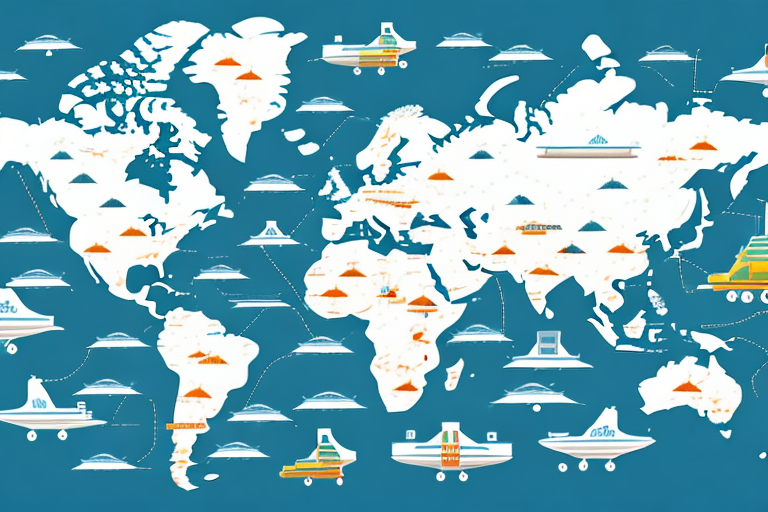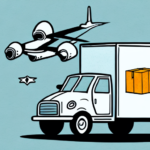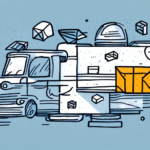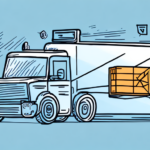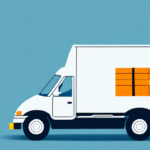History and Evolution of the Delivery Industry
The delivery industry has undergone significant transformation over the centuries, evolving from simple courier services to complex global logistics networks. Initially reliant on traditional transportation methods such as horses and ships, the industry has been revolutionized by advancements in technology, transportation, and digital infrastructure.
Early Beginnings
The concept of delivery services dates back to ancient civilizations, where messages and small goods were transported using animals or on foot. The establishment of formal postal systems in empires like Rome and Persia laid the foundation for organized delivery operations.
20th Century Advancements
The 20th century marked a pivotal era for the delivery industry with the introduction of motorized vehicles and air transport. Companies like FedEx, founded in 1971, and UPS, established in 1907, revolutionized the sector by offering rapid and reliable delivery options. The development of tracking systems and standardized logistics processes further enhanced efficiency.
Digital Transformation
The rise of the internet and e-commerce has further transformed the delivery industry. Enhanced tracking systems, automated sorting facilities, and real-time communication have significantly improved operational efficiency and customer satisfaction. According to a Statista report, global e-commerce sales surpassed $4.2 trillion in 2020, driving exponential growth in delivery services.
Leading Global Delivery Companies
The global delivery landscape is dominated by several key players known for their expansive networks and reliable services. These companies have established themselves as leaders through innovation, extensive infrastructure, and strategic global presence.
FedEx Corporation
FedEx operates in over 220 countries and territories, offering services ranging from overnight shipping to freight forwarding. In 2022, FedEx reported revenues exceeding $93 billion, underscoring its significant market presence.
United Parcel Service (UPS)
UPS is renowned for its extensive logistics and supply chain solutions, serving millions of customers worldwide. UPS operates a fleet of over 125,000 vehicles and employs more than 500,000 people globally.
DHL Express
DHL Express, a division of the Deutsche Post DHL Group, specializes in international shipping and courier services. DHL operates in more than 220 countries and territories, making it one of the most geographically diverse delivery companies.
Other Major Players
- TNT Express
- Japan Post Group
- Deutsche Post DHL Group
- Royal Mail Group
- SF Express
- Poste Italiane
- China Post Group
Impact of E-commerce and the COVID-19 Pandemic
The COVID-19 pandemic acted as a catalyst for both e-commerce growth and significant changes within the delivery industry. The surge in online shopping and the necessity for contactless deliveries reshaped operational strategies across the sector.
Surge in Demand
The pandemic accelerated the shift towards online shopping, with global e-commerce sales increasing by 27% in 2020 according to Statista. This surge placed unprecedented demand on delivery services, necessitating rapid expansion and adaptation.
Operational Adjustments
Delivery companies had to scale their operations swiftly, expanding their workforce, enhancing logistics infrastructure, and implementing stringent safety protocols to manage the increased volume and ensure the safety of their employees and customers.
Innovation Amid Crisis
The pandemic spurred innovations such as contactless deliveries, automated sorting systems, and the adoption of delivery robots and drones to maintain service continuity while minimizing human contact.
Technological Innovations and Future Trends
Technology continues to drive innovation in the delivery industry, paving the way for more efficient, faster, and sustainable delivery methods.
Autonomous Delivery Vehicles
Companies like Amazon and Alphabet's Wing are pioneering the use of drones and autonomous ground vehicles to expedite delivery times and reduce operational costs. These technologies promise to revolutionize last-mile delivery by increasing speed and reducing dependency on human drivers.
Blockchain in Supply Chain
Blockchain technology is being explored to enhance transparency and security in supply chain management. By providing an immutable ledger of transactions, blockchain helps in better tracking of packages and preventing fraud.
Sustainable Technologies
The integration of electric vehicles and renewable energy sources is gaining momentum as delivery companies seek to reduce their carbon footprint. For instance, UPS has committed to deploying 10,000 electric delivery vehicles by 2024.
Sustainability Initiatives in Delivery Services
The environmental impact of the delivery industry is a growing concern, prompting companies to adopt sustainable practices aimed at reducing carbon emissions and minimizing packaging waste.
Green Transportation
Many delivery companies are transitioning to electric and hybrid vehicles to lower greenhouse gas emissions. UPS, for example, aims to have 10,000 electric delivery vehicles on the road by 2024.
Sustainable Packaging
The use of recyclable and biodegradable packaging materials is becoming standard practice. DHL has committed to using sustainable packaging and aims to have all its packaging materials be reusable or recyclable by 2025.
Carbon Offsetting Programs
Initiatives such as tree planting and purchasing carbon credits are employed to offset emissions generated by delivery operations. These programs help companies achieve a net-zero carbon footprint and contribute to environmental conservation.
Customer Expectations, Service Quality, and Challenges
Meeting evolving customer expectations remains a significant challenge for delivery companies, requiring continuous innovation and adaptation to maintain service quality.
Speed and Reliability
Modern consumers demand fast and reliable delivery services, with many expecting same-day or next-day options. Companies must balance speed with cost-effectiveness to meet these expectations.
Pricing Strategies
Competitive pricing is crucial, yet companies must ensure they can maintain profitability. Offering tiered service levels, such as express and standard delivery, allows consumers to choose based on their needs and budget.
Enhancing Customer Experience
Features like real-time tracking, flexible delivery options, and seamless return processes are essential for enhancing the customer experience. Advanced tracking technologies and user-friendly mobile applications play a critical role in meeting these demands.
Supply Chain Management and Growth Opportunities
Effective supply chain management is fundamental to the success of delivery companies, enabling them to optimize operations and capitalize on growth opportunities.
Advanced Analytics
Leveraging big data and analytics allows companies to optimize their supply chains, forecast demand, and improve inventory management. Predictive analytics can help in anticipating peak periods and adjusting resources accordingly.
Expanding Markets
Emerging markets present significant growth opportunities for delivery companies. Increasing internet penetration and rising middle-class populations in regions like Southeast Asia and Africa are driving demand for reliable delivery services.
Strategic Partnerships
Collaborations with local businesses and other logistics providers enable companies to enhance their service offerings and expand their geographical reach. Strategic alliances can also lead to shared resources and reduced operational costs.
Case Studies: Success Stories of Top Delivery Companies
Examining the success stories of leading delivery companies provides valuable insights into effective strategies and innovative practices driving industry growth.
FedEx's Overnight Delivery Model
FedEx revolutionized the delivery industry by introducing the first overnight delivery service in 1973. This model set a new standard for speed and reliability, positioning FedEx as a leader in the logistics sector.
DHL’s Global Expansion
DHL Express has achieved significant global expansion through strategic acquisitions and a focus on international markets. Operating in over 220 countries and territories, DHL has established a robust global network that supports seamless international shipping.
Opportunities for Growth and Expansion in the Global Delivery Market
The delivery industry continues to evolve, with numerous opportunities for growth and expansion driven by technological advancements and shifting market dynamics.
E-commerce Integration
Integrating shipping solutions with e-commerce platforms simplifies logistics and enhances the customer shopping experience. Seamless integration facilitates efficient order processing, tracking, and returns management.
Sustainable Growth
Investing in green technologies and sustainable practices not only benefits the environment but also attracts eco-conscious consumers. Companies adopting sustainable initiatives are better positioned to meet regulatory requirements and consumer preferences.
Innovation and Adaptation
Continuous innovation in delivery methods, such as the adoption of drones and autonomous vehicles, and adapting to market trends are essential for maintaining competitiveness in the rapidly evolving delivery landscape.
In conclusion, the delivery industry is a vital component of the global economy, driving commerce and connecting businesses with consumers worldwide. Understanding the leading players, the impact of e-commerce and global events, technological advancements, sustainability efforts, and evolving customer expectations is crucial for leveraging the industry's potential and fostering continued growth.













